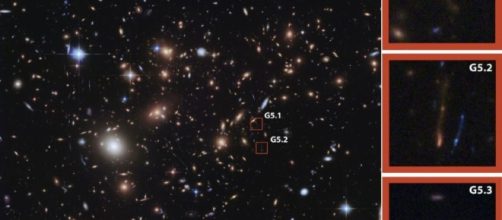Tuesday, March 28, 2017 – Astronomers claim that they have spotted unexpected, dust-obscured Stars in a distant galaxy. Alexandra Pope and colleagues at the University of Massachusetts report that they have detected a significant number of stars in a dust-obscured galaxy behind a Frontier Fields cluster.
Pope explains, “The dwarfs are relatively new, and we have no idea about their existence. They form in a large number in a distant galaxy and are surrounded by dense dust particles. The observation clearly shows that we have more to learn about star formation.” The study is published today in “The Astrophysical Journal.”
Space scientists use new tools to spot the dwarfs
Alexandra Pope says she will use a variety of new tools to spot similar stars.
As historians want to know about the history of civilizations, astronomers want to know everything about the universe. Pope and her team use the 50-meter Large Millimeter Telescope (LMT) to spot the stars in distant galaxies. Astronomers prefer NASA’s SDO (Solar Dynamics Observatory) and STEREO (Solar Terrestrial Relations Observatory) to study the characteristics of the newly discovered stars. Space scientists are analyzing how stars are formed. They have found numerous tracing dust-obscured galaxies. Experts believe that the newly discovered stars are entirely made of soil and gasses, including hydrogen, oxygen, and neon.
The mass of the newly discovered stars
Experts say that they are at the basic level and have no idea about the mass of the newly discovered stars.
However, the stars are of large and small sizes. Some are close to their central galaxy, while others are far away. The stars show signs of both low magnetism and high dust content. It seems that high soil content is responsible for star formation. The Aztec camera on the LMT observed these stars, but astronomers entirely rely on Hubble Space Telescope to study their properties. The mass of the dwarfs is unknown as many of them change their locations. Some tiny stars quickly disappear, and new dwarfs are built up in the galaxy. Pope says the observations are limited because the stars have high dust content and many of them quickly vanish.
This research project is supported by the U.S. National Science Foundation, INAOE, and UMass Amherst.

